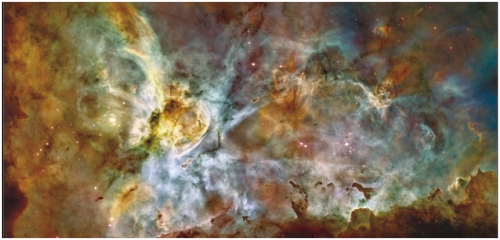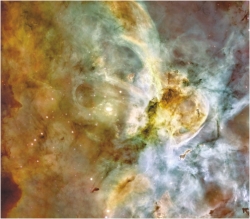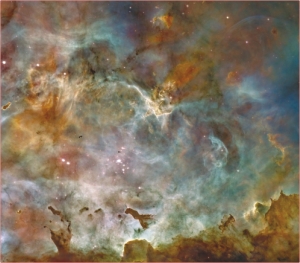
Inside
|
The Grandest Questions M. Amirul Alam and M. Zahidul Alam search the skies for an answer The stars in the night sky appear to our eyes as little points of light here and there, some bright and some dim. Objects in the sky, and other natural phenomena, have inspired people throughout the ages. For thousands of years people have associated those objects in the sky and aspects of their physical world with the gods and goddesses of their cultures. This continues to have a profound impact on our culture and is a powerful expression of the human intellect. The study of planets, stars, galaxies, and intergalactic and interstellar space falls under the field of astronomy, which is one of the oldest basic sciences. Huge progress has been made in astronomy over the last few decades. A hundred years ago we barely knew of the existence of our own Milky Way galaxy. Today, we know that many billions of galaxies make up the universe. A hundred years ago, we had no means to tell whether there were other solar systems in the universe. Today, we know of more than 200 planets around other stars in our galaxy, and we are moving towards an understanding of how life might have first appeared. The universe is a huge, wide-open space that holds everything from the smallest particle to the biggest galaxy, and the Earth is a giant spaceship that we live on as it travels through space. Most commonly the universe is defined as everything that physically exists: the entirety of space and time, all forms of matter, energy and momentum, and the physical laws and constants that govern them. Scientists believe that around 14 billion years ago, a powerful explosion called the Big Bang happened. This powerful explosion set the universe into motion, and this motion continues today. Scientists are not yet sure whether the motion will stop, change direction, or keep going forever. No one knows just how big the universe actually is. Astronomers try to measure it all the time and astronomical observations indicate that the universe is at least 93 billion light years across --a light year equals 9.5 trillion kilometres. Creation of the Universe As the universe expanded and cooled, construction began, gluons pulled quarks together in threes to form protons and neutrons, and the heavier leptons decayed into electrons. Some neutrons decayed into protons. The remaining neutrons bonded with protons to form the nuclei of atoms of the first three elements -- hydrogen, helium, and lithium. By the end of the first three minutes, there were no neutrons left, and at this stage the universe was filled with high-energy gamma radiation. The atomic particles joined to form hydrogen and helium. As further expansion and cooling took place, the radiation lost energy, turning into X-rays, light, and heat. Light was able to travel in straight lines over long distances, and the universe became transparent. Over billions of years, these gases have produced galaxies, stars, and planets. The Milky Way galaxy (the galaxy in which we live) took its spiral shape a few billion years after the Big Bang, and life appeared on Earth 9.9 billion years after the Big Bang. The universe is continuously expanding, and distant clusters of galaxies are rushing away from each other at a rate of 0.01 light-years every year. Galaxies A large galaxy contains more than 100 billion stars, a small galaxy only a few hundred thousand. Even the smallest galaxies are so big that it takes light thousands of years to cross them. The most distant galaxies the astronomers can detect are 123,000 million million million km (123 × 1021 km) away. The Hubble space telescope can photograph the stars in distance galaxies if they are closer than 100 light years. Galaxies are formed from vast, spinning clouds of gas. They come in different shapes; elliptical, spiral, barred-spiral, irregular, etc. Galaxies sometimes crash together, spawning thousands of hot, new stars. Colliding galaxies often merge. Eventually, most galaxies will merge with their neighbours, and the universe will consist of a smaller number of much bigger galaxies. Tiny amounts of gas and dust between the stars add up to 10% of a galaxy's mass. The Milky Way The Milky Way is a spiral galaxy with a nucleus of old stars surrounded by a halo of even older ones; all the young stars are located in the spiral arm. The Milky Way galaxy is part of the local group of galaxies, and it is so large that it takes light 100,000 years to travel from edge to edge. It has been estimated that there are roughly 100 billion stars in our galaxy. The Solar System A planet is any body in orbit around a sun that has enough mass to form itself into a spherical shape, and has cleared its immediate neighbourhood of all smaller objects. By this definition, the Solar System has eight known planets: Mercury, Venus, Earth, Mars, Jupiter, Saturn, Uranus, and Neptune. From the time of its discovery in 1930 until 2006, Pluto was considered the Solar System's ninth planet. But in the late 20th and early 21st centuries, many objects similar to Pluto were discovered in the outer Solar System, most notably Eris, which is slightly larger. On August 24, 2006, the International Astronomical Union defined the term "planet" for the first time (it only applied to objects in the Solar System), excluding Pluto and reclassifying it under the new category of dwarf planet, along with Eris and Ceres. A dwarf planet is not required to clear its neighbourhood of other celestial bodies. Other objects in the solar system that may become classified as dwarf planets are Sedna, Orcus, and Quaoar. The remainder of the objects in orbit around the sun are SSSBs. Moons are those objects in orbit around planets, dwarf planets and SSSBs, rather than the sun itself. Therefore, objects orbiting the sun are planets, dwarf planets, and SSSBs; and objects orbiting the planets, dwarf planets and SSSBs are moons. Moons are also called natural satellites. The Solar System was born out of a vast, spinning cloud of gas and dust -- the solar nebula. The process began 4.6 billion years ago with the Sun's birth. The system occupies a disk shaped volume of space more than 12 billion km across. The sun contains more than 99.8% of the Solar System's mass. The inner four (Mercury, Venus, Earth, Mars) planets are composed of rock, while the next four (Jupiter, Saturn, Uranus and Neptune) are larger and are composed mostly of liquefied gas. The outermost dwarf planets including Pluto are mainly rock. The Sun is just one of 100 billion stars that inhabit our Milky Way galaxy. Like other stars, it is a huge ball of spinning gas. Nuclear reaction takes place in its core, giving off energy. Energy is produced when four hydrogen nuclei (protons) fuse to make one helium nucleus. The Sun is, at present, about 70% hydrogen and 28% helium by mass, everything else (metals) amounts to less than 2%. About 700 million tons of hydrogen is converted to helium per second in the Sun, using up 5,300 tons of its mass every second. The Sun's distance from Earth is 150 million km, and 25,000 light years from the centre of the galaxy. Its diameter is 1.39 million km (109 times more than Earth's); the core temperature is 15 million oC, and surface temperature is 5,500 oC; its age is 4.6 billion years. Astronomers estimate that the Solar System as we know it today will last until the Sun begins its journey away from the main sequence. Calculations of the ratios of hydrogen and helium within the Sun suggest that it is halfway through its life cycle. Around 7.6 billion years from now, it will move off the main sequence after burning its supply of hydrogen fuel. This will cause the Sun to expand roughly up to 260 times its current diameter, becoming a red giant, and will come very close to the Earth's orbit. At that point, the Earth will become so hot that there will no longer be any oceans, and will probably be the end of life. At this point, the sun will have cooled and dulled, because of its vastly increased surface area. Eventually, the Sun's outer layers will fall away. Then it will collapse and end its life as a white dwarf star, an extraordinarily dense object, half its original mass but only the size of the Earth. Stars The stars are born deep within dark molecular clouds of gas and dust. When newborn stars -- proto-stars -- light up, they heat this cloud with their radiation. The glowing cloud is called a nebula. The star's gravitation causes the cloud to collapse, and eventually the whole cloud turns into stars. Most stars contain two gases, hydrogen and helium. The gases are held together by gravity, and at the core they are densely packed. A star produces energy by nuclear fusion. Within the core, hydrogen nuclei (protons) collide and fuse to form deuterium (heavy hydrogen) first and then two forms of helium. During fusion, energy is given off. All the chemical elements that exist in the universe are heavier than hydrogen; helium and lithium were made in nuclear reactions inside stars 14 billion years ago.Astronomers can tell a star's brightness, colour, and temperature by analysing its light. By splitting starlight into its constituent colours, they can find out what stars are made of and how fast they are moving. With accurate measurements of position, astronomers can predict where stars will wander through the sky, thousands of years from now. Stars vary in size, age, and mass. Some are white dwarfs, the size of Earth, and some are super-giants, big enough to engulf the entire solar system. Some stars are only a few million years old, while others are as ancient as the universe itself. The stars are far from each other. The sun's nearest neighbour is Proxima Centauri, one of the three stars that make up the Alpha Centauri system. It is 4.2 light-years away from the Sun. Other nearby stars are Barnard's Star, Wolf 359, Sirius A and B, Luyten-8 A and B, and Ross 154, respectively 5.96, 7.78, 8.58, 8.73 and 9.68 light years away. A distant star looks dimmer than a nearby one of a similar luminosity. This is because its light spreads out over a larger area before it reaches the Earth. Red Giants Stars of the same mass as the sun shine steadily for about 10 billion years. Stars end their lives in two different ways: those with mass around the mass of the Sun end their lives in a gentle way, becoming a planetary nebula and leaving behind a remnant called "white dwarf." Stars much more massive than the Sun explode as a supernova, leaving behind either a "neutron star" or a "black hole." The Sun will never burst and will not become a black hole. When a star runs out of hydrogen, helium -- produced in the core when the star was on the main sequence -- is fused into carbon and oxygen, producing energy, and the star enters the giant phase. At this stage, the star balloons into a brilliant red giant, hundreds of times its former diameter. Lower-mass stars brighten dramatically and become red giants. High-mass stars remain about the same brightness but become super-giants. When a typical star first leaves the main sequence, it can swell up to 200 times the diameter of the Sun, super-giants may exceed 1,000 times, eventually settling down to between 10 and 100 times the diameter of the Sun. At the red giant stage, the colour of a star depends on its surface temperature -- blue (hottest), white, yellow, or red. Planetary Nebulas Black holes
Friction makes the swirling gas hot, and it emits X-rays. A black hole shrinks and loses mass through Hawking radiation. Stephen Hawking showed that the intense gravity around a mini black hole can cause it to slowly release Hawking radiation, which drains away its energy and mass. The black hole finally disappears, exploding with a blast of gamma rays. Mathematicians explore black holes using Einstein's theory of relativity, showing the strange effects of a black hole where its matter has collapsed into a singularity -- a tiny point of infinite density. Einstein's theory sees gravity as a distortion of space. He thought of space as being like a thin rubber sheet that gets dented, or forms a gravitational well, if heavy objects are placed on it. A black hole has this same basic structure. Supernovas The explosion of a supernova occurs in a star in a very short time span of about 100 seconds, marking the death of a star and leaving behind either a neutron star (rebirth of star in another form) or a black hole. The remnants from the supernova explosion blown into space are extremely hot and are incorporated into new stars that continue to glow for thousands of years as neutron stars. Because of their intense magnetic and gravitational fields, neutron stars often become radio or X-ray pulsars. More than a thousand pulsars have been discovered since the first one was found in 1967. Comets Meteors Meteorites Asteroids The Grandest Questions As the universe expanded and cooled, a sort of selection mechanism not only biased the creation of quarks and electrons over other types of particles, but also generated the excess number of particles over anti-particles. Surviving the annihilation with their antimatter, these excess particles organised themselves into more complex structures, until eventually atoms, mostly hydrogen, were formed. Within a fraction of a second, the universe grew from smaller than an atom to bigger than a galaxy. Without a doubt, the biggest question in science is: "Where did it all come from?" and the mystery is: "What kind of physics could generate this?" Scientists have known since the 1920s that the universe is expanding. But it was only in the late 1990s that they realised it is doing so at an ever-increasing pace. Not sure how to explain this phenomenon, they concluded that some mysterious force, dark energy (a strange force pushing galaxies apart at ever faster speeds), is causing this acceleration. This mysterious force is said to make up about 75 percent of the mass-energy budget of the cosmos. This utterly inexplicable force is one of nature's great unsolved mysteries. Scientists admit they are pretty clueless about what's going on. Brilliant minds have expressed every conceivable opinion. But the very best information from science tells us that there is no consensus.
In 1973, Edward Tyron proposed that the universe was created from vacuum. This is because according to quantum theory, the apparently quiescent vacuum is not really empty at all. It is possible for an electron and a positron (a matter antimatter pair) to materialise from the vacuum, exist for a brief flash of time and then disappear into nothingness. Such vacuum fluctuations cannot be observed directly as they typically last for only about 10-21 seconds and the separation between the electron and positron is typically no longer than 10-10 cm. Through indirect measurements, physicists are convinced that these fluctuations are real and in principle, any object might materialise briefly in the vacuum. However, the probability for an object to materialise from the vacuum decreases dramatically with the mass and complexity of the object. The main difficulty of this proposal is that the probability that a 13.7 billion year old universe could arise from this mechanism is extremely small. In addition, physicists would question Tyron's starting point: if the universe was born from empty space, then where did the empty space come from? In 1982, Alexander Vilenkin proposed an extension of Tyron's idea and suggested that the universe was created by quantum processes starting from "literally nothing," meaning not only the absence of matter, but the absence of space and time as well. Vilenkin took the idea of quantum tunneling and proposed that the universe started in the totally empty geometry and then made a quantum tunneling transition to a non-empty state (sub-atomic in size), which through inflation (the universe expanded exponentially fast for a brief period of time which caused its size to increase dramatically) came to its current size. So far, probably the creation of universe has most convincingly been explained by Einstein's famous theory of relativity. According to this theory, mass and energy are related by the equation E=mc2 i.e. mass and energy are equivalent. So, the total mass of the universe need not be conserved even though the total energy (taking into account the energy that is equivalent of the mass in the universe) is conserved. Hence if there is enough energy, photons can create matter-antimatter pairs. This is called pair production and is responsible for the mass in the universe. Still, the question of where everything came from remains, and there is no conclusive opinion. Stephen Hawking (most famous for his contributions to the fields of cosmology and quantum gravity and for his book, A Brief History of Time) proposed a description of the universe in its entirety, viewed as a self-contained entity, with no reference to anything that might have come before it. The description is timeless, in the sense that one set of equations delineates the universe for all time. As one looks to earlier and earlier times, one finds that the model universe is not eternal, but there is no creation event either. Instead, at times of the order of 10-43 seconds, the approximation of a classical description of space and time breaks down completely, with the whole picture dissolving into quantum ambiguity. In Hawking's words, the universe "would neither be created nor destroyed. It would just BE." The statements of Vilenkin and Hawking sounds exactly the verses of the Holy Quran where Allah says: "With power and skill did We construct the Firmament: for it is We Who create the vastness of space (51:47)" and "To Him is due the primal origin of the sky and the earth: verily when He decreeth a matter, His Command is, 'BE,' and it is! (2:117; 16:40; 36:82)." Here is another quotation from a brilliant physicist Leon Lederman (a Nobel Prize winner): "In the very beginning, there was a void, a curious form of vacuum, a nothingness containing no space, no time, no matter, no light, no sound. Yet the laws of nature were in place and this curious vacuum held potential. A story logically begins at the beginning, but this story is about the universe and unfortunately there are no data for the very beginnings -- none, zero. We don't know anything about the universe until it reaches the mature age of a billion of a trillionth of a second. That is, some very short time after creation in the big bang. When you read or hear anything about the birth of the universe, someone is making it up -- we are in the realm of philosophy." It is easy to make an argument for Allah's existence from a cosmological standpoint. If Allah created matter/energy, and designed the systems that have propelled matter into its present arrangement then who created Allah, or, if the universe needs a cause, then why doesn't Allah need a cause? Everything which has a beginning has a cause. The universe requires a cause because it had a beginning. Allah, unlike the universe, had no beginning, no end: "He is Allah, the One and Only; Allah, the Eternal, Absolute; He begetteth not, nor is He begotten; And there is none like unto Him (112:1-4)." Allah doesn’t need a cause. In fact, the more science discovers about the universe, the more complex and precisely designed we realise it is. For instance, the Earth is perfect in size, with perfect corresponding gravity, which holds a thin layer of mostly nitrogen and oxygen gases, only extending about 80 km above the Earth's surface. If Earth were smaller, an atmosphere would be impossible, like the planet Mercury. If Earth were larger, its atmosphere would contain free hydrogen, like Jupiter. Earth is the only known planet equipped with an atmosphere of the right mixture of gases to sustain plant, animal, and human life. The Earth is located the right distance from the Sun with perfect amounts of greenhouse gases for perfect greenhouse effect to generate appropriate amount of heat. Without the greenhouse effect, Earth's average temperature would be about -19 °C rather than the present mean temperature of about 15 °C. If the Earth were any further away from the sun, all would freeze; any closer, everything would burn up. Even a fractional variance in the Earth's position to the sun would make life on Earth impossible. The Earth remains this perfect distance from the sun while it rotates around the sun at a speed of nearly 107,000 km/hour. It is also rotating and tilting slightly on its axis, allowing season change and properly warming and cooling the entire surface of the Earth every day. Our moon is at the perfect size and distance from the Earth for its gravitational pull. The moon creates important ocean tides and movement so ocean waters do not stagnate but are oxygenated perfectly to support aquatic lives, and yet our massive oceans are restrained from spilling over across the continents. All these phenomena suggest that there is a "higher intelligence" guiding the universe. The complex structure of the living cell is another good example. The technology of the 21st century has delved into the tiniest particles of life, and has revealed that the cell is the most complex system mankind has ever confronted. Today we know that the cell contains power stations producing the energy to be used by the cell, factories manufacturing the enzymes and hormones essential for life, a databank where all the necessary information about all products to be produced is recorded, complex transportation systems and pipelines for carrying raw materials and products from one place to another, advanced laboratories and refineries for breaking down external raw materials into their useable parts, and specialised cell membrane proteins to control the incoming and outgoing materials. And these constitute only a small part of this incredibly complex system. W.H. Thorpe, an evolutionist scientist, acknowledges that: "The most elementary type of cell constitutes a 'mechanism' unimaginably more complex than any machine yet thought up, let alone constructed, by man." A cell is so complex that even the high level of technology attained today cannot produce one. No effort to create an artificial cell has ever met with success. Indeed, all attempts to do so have been abandoned. Not even a complete cell, a recently study revealed that the spliceosome (a complex of specialised RNA and protein subunits that removes introns from a transcribed pre-mRNA segment) in cell is composed of as many as 300 distinct proteins and five RNAs, making it among the most complex macromolecular machines known. One of the basic reasons why science alone cannot explain how the cell came into existence is its irreducible complexity. A living cell maintains itself with the harmonious co-operation of many organelles. If only one of these organelles fails to function, the cell cannot remain alive. The cell does not have the chance to wait for unconscious mechanisms like natural selection or mutation to permit it to develop. Thus, the first cell on Earth was necessarily a complete cell possessing all the required organelles and functions, and this definitely means that this cell had to have been created. When taken together with Qur'anic statements on other natural phenomena, the details in the Qur'an on the creation of the universe form an important factor in the age-old debate between science and religion. Mistaken ideas regarding the Qur'an have been common in Christian countries for a very long time. They still persist, as far as the history and content of the Qur'an are concerned. However, there is no incompatibility between the teachings of the Qur'an and modern scientific discoveries so far. The truth of Islam will flourish more with the advancement of science and scientific knowledge, provided that one's point of view remains scientific in the real sense of the word and one does not give his or her conjugative the status of certainty and observation. There are open challenges from Allah too: "He Who created the seven heavens one above another: No want of proportion wilt thou see in the Creation of (Allah) Most Gracious. So turn thy vision again: seest thou any flaw? Again turn thy vision a second time: (thy) vision will come back to thee dull and discomfited, in a state worn out (67: 3-4)."In fact, the Qur'an contains statements concerning the universe that are astounding. It is impossible to explain these statements in human terms, given the state of knowledge at the time the Qur'an was communicated. Needless to say, Allah does not manifest Himself scientifically, yet it is perfectly possible to conceive of Allah in scientific terms, the way the whole universe is governed by and is operating on the principle of balance and equilibrium. M. Amirul Alam is a Research Associate, Bangladesh Agricultural University, Mymensingh, and M. Zahidul Alam is a Postdoctoral Fellow, University of Guelph, Canada. |
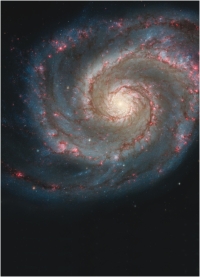

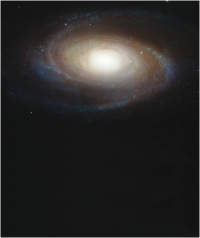
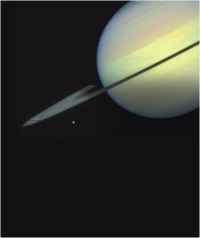
 Black holes can be detected only if they are close to another star. The hole's powerful gravity pulls gas off its companion star at high speed. The pull of the black hole's gravity heats, which is poured down the black hole, forming a spiral vortex, called an accretion disk, around it.
Black holes can be detected only if they are close to another star. The hole's powerful gravity pulls gas off its companion star at high speed. The pull of the black hole's gravity heats, which is poured down the black hole, forming a spiral vortex, called an accretion disk, around it. 
